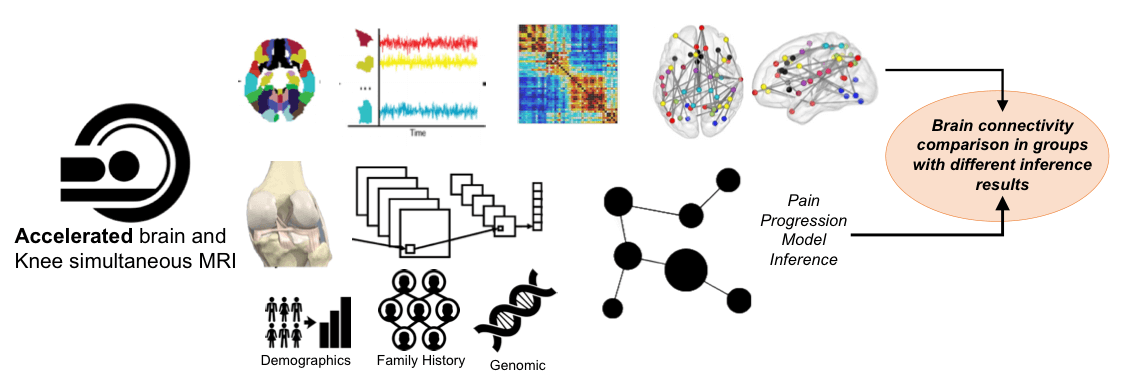Principal author
Contributors
An inter-disciplinary team led by Valentina Pedoia, PhD, including Sharmila Majumdar, PhD, Benjamin Glicksberg, PhD, and Atul Butte, MD, PhD, is developing a multi-modal framework integrating genomics, imaging, and clinical data to develop novel graph-based deep learning predictive models enabling the extraction of latent multi-domain signatures of unique clinical progression trajectories and prognose subject’s future incidence of joint pain. While integrating genomics with imaging and clinical information will shed light on the contribution of heritability in joint pain and contribute to the discovery of novel structural and functional joint imaging pain biomarkers, inconsistencies between joint abnormalities and patient experience may still be observed. To explain these inconsistences, the team has sought to additionally incorporate neuroimaging metrics of pain perception. A better understanding of these mechanisms could not only explain the large intra- and inter-subject variability of pain perception, but it may also be crucial to identifying different subtypes of progression that might require subtype-specific treatment regimens. This project has the potential to discover new functional and objective biomarkers for pain perception and future incidence and to identify the “brain-joint crosstalk” mediated by genetic factors, to assess common and differentiating imaging and clinical signatures of progression phenotypes previously identified, and to assess to what extent the patient-reported pain and pain progression subgroups could be identified by intrinsic functional brain connectivity features.
The goal of this research is to:
- Discover new biomarkers for pain perception
- Identify the “brain-joint crosstalk”

Get involved
Are you researcher, doctor, or industry partner with something to contribute to this work? We want to hear from you. We welcome opportunities for collaboration and discussion.
